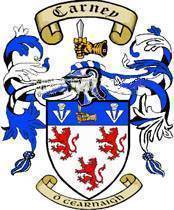
Carney & Wehofer Family
Genealogy Pages

Mihaly "Michael" VEHOFER
-
Name Mihaly "Michael" VEHOFER Nickname Michael Birth 18 Oct 1865 Kis-Karasztos, Vas, Hungary  [1]
[1] Christening 19 Oct 1865 Pinkamiske, Vas, Hungary  [1]
[1] Gender Male Name Michael Vehofer [1] Name Mihaly Wehofer [1] Residence [1] Geburt: Kleinbachselten Nr. 22 _FSFTID K81H-N4B _FSLINK https://www.familysearch.org/tree/person/details/K81H-N4B _UID C3EAAA6CB2A74BE091D82CF1364BE079A720 Death Yes, date unknown Person ID I30519 Carney Wehofer July 2025 Last Modified 13 Nov 2024
Father Mihaly "Michael" VEHOFER, Wehofer, b. 30 Sep 1841, Bachselten, Vas Hungary  d. Yes, date unknown
d. Yes, date unknown Mother "Johanna" Janka Marie WALTER, Valter, b. 26 Mar 1842, Pinkamiske, Vas, Hungary  d. 17 Sep 1903, Pinkamiske, Vas, Hungary
d. 17 Sep 1903, Pinkamiske, Vas, Hungary  (Age 61 years)
(Age 61 years) Marriage 29 May 1865 Pinkamiske, Vas, Hungary 
Family ID F12507 Group Sheet | Family Chart
Family Anna HALPER, b. 3 Oct 1860, Mischendorf, Oberwart, Burgenland  d. Yes, date unknown
d. Yes, date unknown Marriage 9 Feb 1893 Mischendorf, Vas Hungary 
Family ID F14276 Group Sheet | Family Chart Last Modified 16 Nov 2021
-
Notes - Hungarian Economy
The era witnessed significant economic development in the rural areas. The formerly backwards Hungarian economy became relatively modern and industrialized by the turn of the 20th century, although agriculture remained dominant in the GDP until 1880. In 1873, the old capital Buda and Óbuda (Ancient Buda) were officially merged with the third city, Pest, thus creating the new metropolis of Budapest. The dynamic Pest grew into the country's administrative, political, economic, trade and cultural hub.
Technological advancement accelerated industrialization and urbanization. The Gross national product per capita grew roughly 1.45% per year from 1870 to 1913. That level of growth compared very favorably to that of other European nations such as Britain (1.00%), France (1.06%), and Germany (1.51%). The leading industries in this economic expansion were electricity and electro-technology, telecommunications, and transport (especially locomotive, tram and ship construction). The key symbols of industrial progress were the Ganz concern and Tungsram Works. Many of the state institutions and modern administrative systems of Hungary were established during this period.
The census of the Hungarian state in 1910 (excluding Croatia), recorded the following population distribution: Hungarian 54.5%, Romanian 16.1%, Slovak 10.7%, and German 10.4%.[43][44] The religious denomination with the greatest number of adherents was Roman Catholicism (49.3%), followed by the Calvinism (14.3%), Greek Orthodoxy (12.8%), Greek Catholicism (11.0%), Lutheranism (7.1%), and Judaism (5.0%)
- Hungarian Economy
-
Sources - [S1160] The Church of Jesus Christ of Latter-day Saints, FamilySearch Family Tree (http://www.familysearch.org), ((http://www.familysearch.org)), accessed 13 Nov 2024), entry for Mihaly "Michael" VEHOFER, person ID K81H-N4B. (Reliability: 3).
- [S1160] The Church of Jesus Christ of Latter-day Saints, FamilySearch Family Tree (http://www.familysearch.org), ((http://www.familysearch.org)), accessed 13 Nov 2024), entry for Mihaly "Michael" VEHOFER, person ID K81H-N4B. (Reliability: 3).
